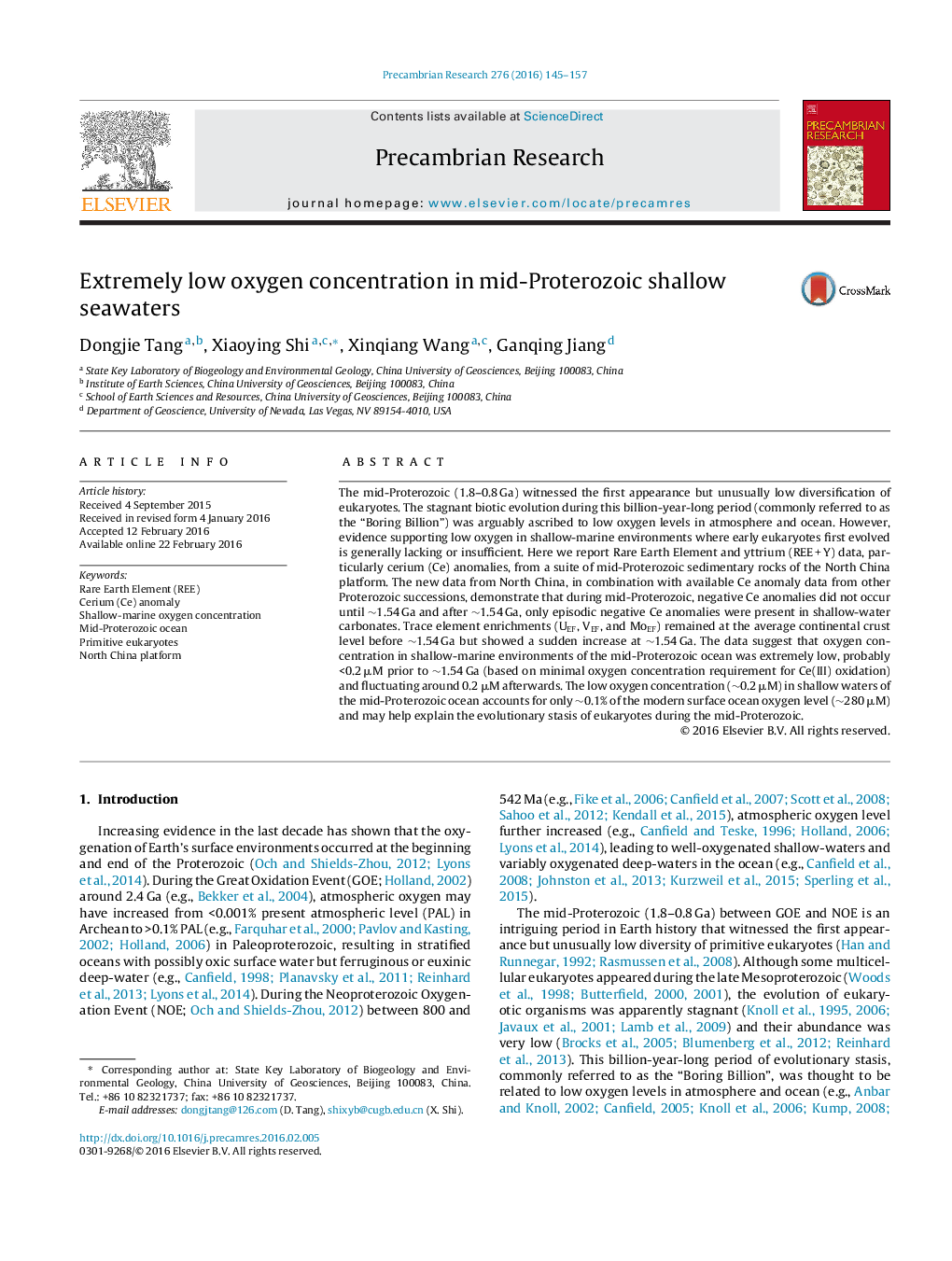| Article ID | Journal | Published Year | Pages | File Type |
|---|---|---|---|---|
| 4722403 | Precambrian Research | 2016 | 13 Pages |
•REE and RSE data suggest extremely low oxygen in mid-Proterozoic ocean.•Oxygen level in shallow seawater was likely <0.2 μM prior to ∼1.54 Ga.•After ∼1.54 Ga the oxygen concentration fluctuated around 0.2 μM.•Low oxygen level in shallow seawaters protracted evolution of early eukaryotes.
The mid-Proterozoic (1.8–0.8 Ga) witnessed the first appearance but unusually low diversification of eukaryotes. The stagnant biotic evolution during this billion-year-long period (commonly referred to as the “Boring Billion”) was arguably ascribed to low oxygen levels in atmosphere and ocean. However, evidence supporting low oxygen in shallow-marine environments where early eukaryotes first evolved is generally lacking or insufficient. Here we report Rare Earth Element and yttrium (REE + Y) data, particularly cerium (Ce) anomalies, from a suite of mid-Proterozoic sedimentary rocks of the North China platform. The new data from North China, in combination with available Ce anomaly data from other Proterozoic successions, demonstrate that during mid-Proterozoic, negative Ce anomalies did not occur until ∼1.54 Ga and after ∼1.54 Ga, only episodic negative Ce anomalies were present in shallow-water carbonates. Trace element enrichments (UEF, VEF, and MoEF) remained at the average continental crust level before ∼1.54 Ga but showed a sudden increase at ∼1.54 Ga. The data suggest that oxygen concentration in shallow-marine environments of the mid-Proterozoic ocean was extremely low, probably <0.2 μM prior to ∼1.54 Ga (based on minimal oxygen concentration requirement for Ce(III) oxidation) and fluctuating around 0.2 μM afterwards. The low oxygen concentration (∼0.2 μM) in shallow waters of the mid-Proterozoic ocean accounts for only ∼0.1% of the modern surface ocean oxygen level (∼280 μM) and may help explain the evolutionary stasis of eukaryotes during the mid-Proterozoic.
